What does “NO DEVICE” mean on Kenwood KDC-BT600U Car Receiver?
- HhubbardrobynAug 27, 2025
The “NO DEVICE” message on your Kenwood Car Receiver indicates that you should connect a USB device and change the source to USB again.
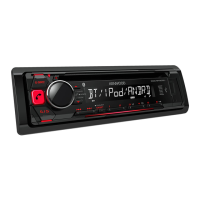
What does “NO DEVICE” mean on Kenwood KDC-BT600U Car Receiver?
The “NO DEVICE” message on your Kenwood Car Receiver indicates that you should connect a USB device and change the source to USB again.
How to fix Bluetooth pairing issues on Kenwood KDC-BT600U Car Receiver?
If you are unable to pair a Bluetooth device with your Kenwood Car Receiver, ensure you've entered the same PIN code on both devices. If that doesn't work, delete the pairing information from both the unit and the Bluetooth device, and then try pairing again.
What to do if no Bluetooth device is detected on Kenwood Car Receiver?
If no Bluetooth device is detected by your Kenwood Car Receiver, try searching from the Bluetooth device again or reset the unit.
Why is radio reception poor on my Kenwood KDC-BT600U Car Receiver?
To improve poor radio reception on your Kenwood Car Receiver, ensure the antenna is firmly connected.
| Brand | Kenwood |
|---|---|
| Model | KDC-BT600U |
| Category | Car Receiver |
| Language | English |
Important safety guidelines, warnings, and cautions for proper product usage.
Explanation of how to read and understand the instruction manual's structure and references.
Identification of the faceplate and remote control layout and functions.
Instructions for turning on, adjusting volume, resetting, and battery replacement.
Guide to initial setup, including language, clock, and date configuration.
Instructions for setting up initial system preferences like crossover type.
Configuration options for audio control, display modes, and easy menu settings.
Settings for source selection, firmware updates, factory reset, and clock display.
Procedures for searching and tuning radio stations using manual and automatic methods.
Options for local seek, auto memory, mono set, news set, and other tuner configurations.
Using PTY search for program types and synchronizing the clock with RDS time.
Steps to connect and play audio from an external device via the AUX input.
Instructions for connecting USB, iPod/iPhone, and Android devices.
Controls for playback, track selection, repeat, and random play modes.
Managing device control modes and selecting music drives for playback.
Utilizing direct music search, quick search, and alphabet search for music files.
Guide to preparing, connecting, and operating the Pandora application.
Procedures for managing Pandora stations, including creation, search, and deletion.
How to bookmark current song information for Pandora accounts.
Steps for pairing and establishing a Bluetooth connection with devices.
Instructions for connecting the microphone and setting up auto-pairing.
Procedures for answering, rejecting, and managing multiple incoming calls.
Adjusting phone volume during calls and switching between hands-free and private talk modes.
Adjusting microphone gain, noise reduction, echo cancel, and call reception settings.
Guide to making calls, accessing call history, and managing call status.
Accessing and managing the phonebook, and using voice commands for calls.
Storing contacts in memory and making calls from stored numbers.
Selecting devices, deleting paired devices, and editing the Bluetooth PIN code.
Performing Bluetooth connectivity tests and configuring auto-reconnect settings.
Instructions for playing audio files from a Bluetooth-connected device.
Listening to internet radio services like Pandora via Bluetooth.
Adjusting loudness, subwoofer settings, fader, balance, and volume offset.
Using sound effects, preset EQ, bass boost, and manual EQ for audio customization.
Setting speaker sizes and configuring crossover frequencies and slopes.
Explanation of crossover settings, including frequency, slope, phase, and gain.
Detailed list of adjustable parameters for 2-way crossover systems.
Specific adjustable parameters for 3-way crossover systems.
Adjusting screen dimmer, brightness, and other display settings.
Customizing display colors, brightness levels, and text scrolling behavior.
Solutions for common issues related to sound, radio reception, and disc playback.
Resolving problems with loading, reading, and playback of media files (CD/USB/iPod).
Solutions for file errors, device detection issues, and playback problems with media.
Troubleshooting common errors and problems with Android devices and the Pandora app.
Steps to resolve issues with detecting, pairing, and connecting Bluetooth devices.
Solutions for poor audio quality, echo, noise, and voice recognition problems during Bluetooth calls.
Guidelines for unit maintenance, disc handling, and basic product information.
Information on supported USB devices, iPod/iPhone models, and Android OS versions.
Important notes regarding Pandora service availability and Bluetooth device compatibility.
How to change and customize the information displayed on the unit screen.
Crucial safety warnings and step-by-step instructions for installing the unit.
Detailed instructions for mounting the unit in the dashboard and removing it.
Visual guide and instructions for connecting the unit's wiring harness.
List of all components included in the installation package for the unit.
Detailed technical specifications for the FM/AM tuner and CD player functions.
Technical specifications related to USB connectivity and Bluetooth version, profiles, and range.
Technical details for auxiliary audio input, preout levels, operating voltage, and dimensions.
Information regarding the unit's Class 1 laser product classification and software licensing.
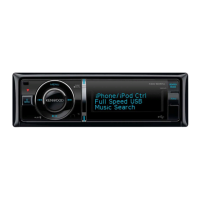
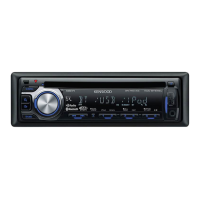
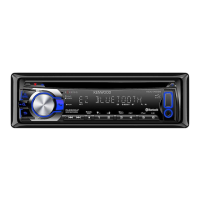
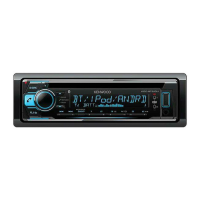
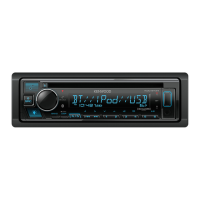
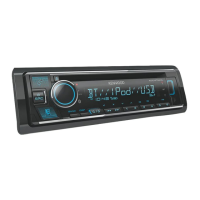
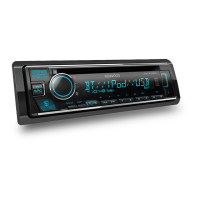

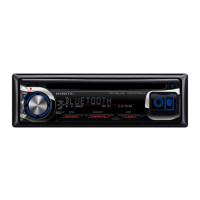
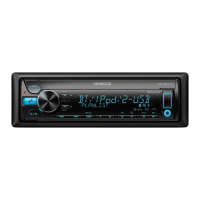
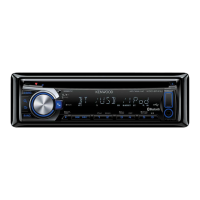

